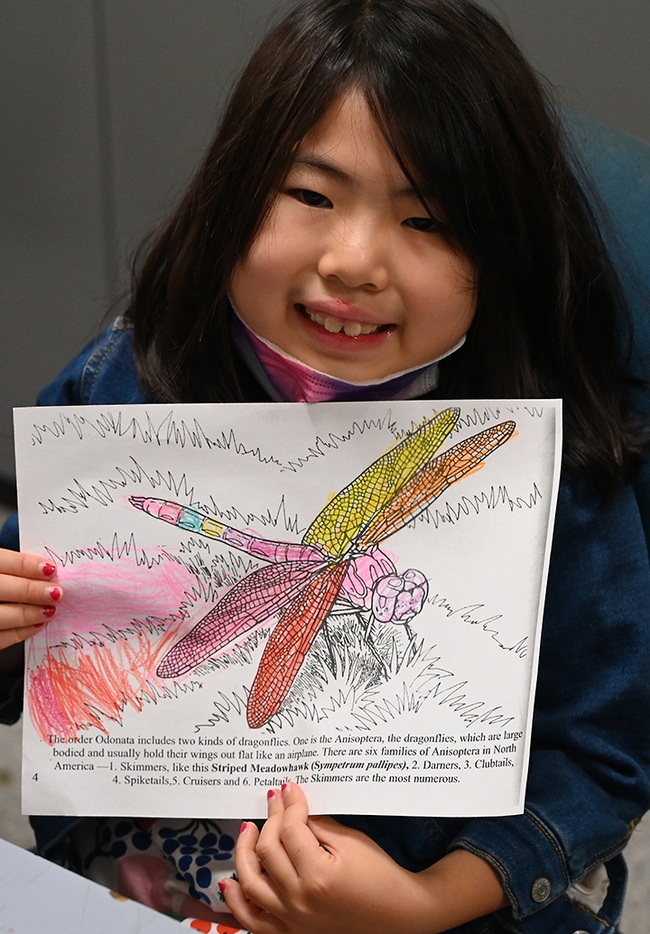
While dragonfly experts fielded questions from guests, over at the arts-and-crafts table, children and their families eagerly colored pages from Kathy Claypole Biggs' dragonfly coloring book, and created decorative dragonfly candles.
Bohart volunteers Barbara Heinsch of Davis and high school student Kate Phillips of Da Vinci Charter Academy staffed the table.
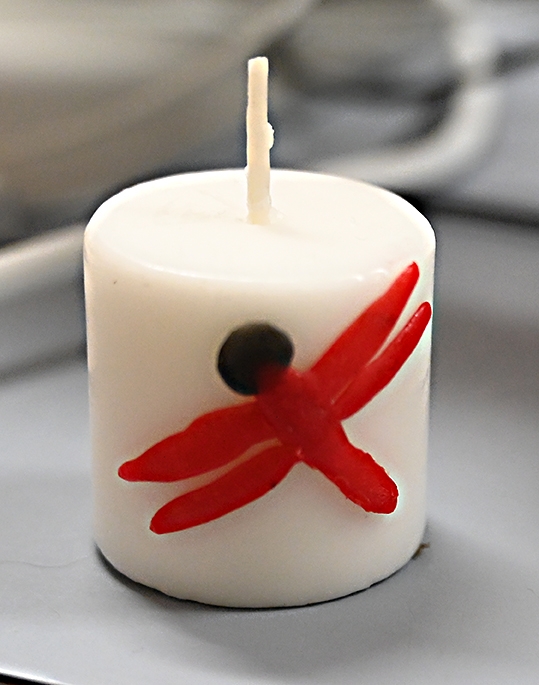
The dragonfly candlemaking project came with instructions:
- Take a small, pea-sized amount of beeswax.
- Roll it out so it is long and skinny (about 3 cm)
- Divide it into 2 equal parts (about 1.5 cm each)
- Press a long one on the candle for the thorax/abdomen
- Roll the other half into a ball and press that on for the head/wings
- Take a pea-sized amount of beeswax
- Roll it out so it is long and skinny (about 4 cm)
- Divide it into 4 equal parts (about 1 cm each)
- Press these onto the candle as wings near the thorax.
Biggs' coloring book, Dragonflies of North America: A Color and Learn Book with Activities, with illustrations by Tim Manolis, showcases 37 common species of dragonflies and damselflies.

Biggs usually participates in the Bohart Museum dragonfly open houses, but was out of the country at the time. Her biography indicates that she worked as an educator in her hometown of Sebastopol in the Gravenstein Union School District for 18 years before becoming an author/publisher/dragonfly/wildlife pond spokesperson.
At the open house (see more information and images on Bug Squad), a sign, "Meet the Dragonfly Experts," greeted the more than 220 guests. The experts featured:
- Rosser Garrison, retired from the California Department of Food and Agriculture (Pest Diagnostics Branch of Plant Health and Pest Prevention Services)
- Christopher Beatty, a visiting scholar in the Program for Conservation Genomics at Stanford University
- Bohart associate Greg Kareofelas
- UC Davis doctoral student Christofer Brothers of the laboratory of Professor and Chancellor's Fellow Stacey Combes, Department of Neurobiology, Physiology and Behavior, College of Biological Sciences.
- Andy Rehn, stream ecologist with the California Department of Fish and Wildlife and a UC Davis doctoral alumnus
Also sharing her expertise was senior biologist Sandra Hunt-von Arb of Pacific Northwestern Biological Resources Consultants, Inc.
The Bohart Museum, founded in 1946 and named for UC Davis professor and noted entomologist Richard Bohart, is located in Room 1124 of the Academic Surge Building, 455 Crocker Lane, UC Davis campus. Directed by Lynn Kimsey, UC Davis distinguished professor of entomology, it houses a global collection of eight million insect specimens, as well as the live "petting zoo" and an insect-themed gift shop stocked with t-shirts, hooded sweatshirts, books, posters, jewelry, collecting equipment and more. It is open to the public from 8 a.m. to noon, and 1 to 5 p.m., Mondays through Thursdays. For more information, access the website or contact bmuseum@ucdavis.edu.
Attached Images:
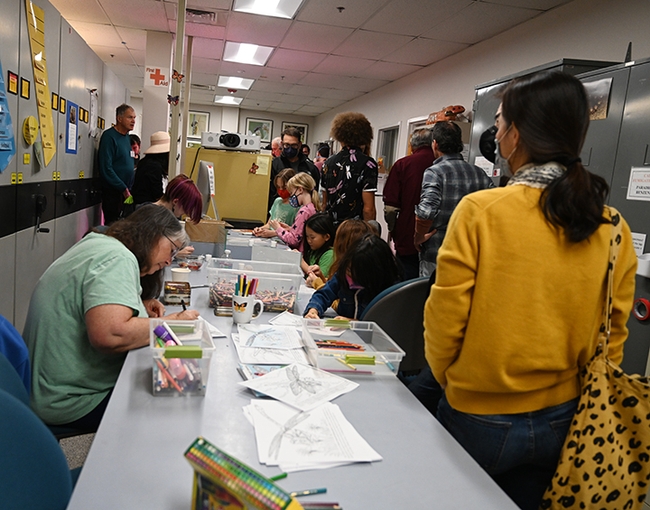
The arts-and-crafts activity at the Bohart Museum's dragonfly open house was a popular site. In the back (at left) is noted dragonfly expert Rosser Garrison of Sacramento. (Photo by Kathy Keatley Garvey)
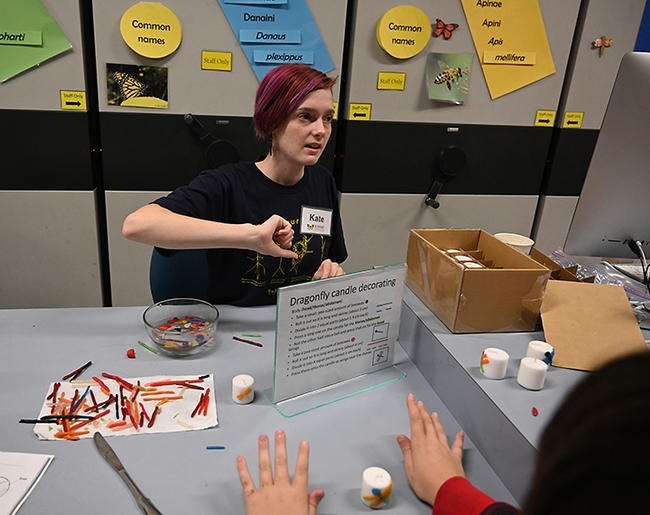
High school student Kate Phillips of the Da Vinci Charter Academy leads the dragonfly candle project. (Photo by Kathy Keatley Garvey)
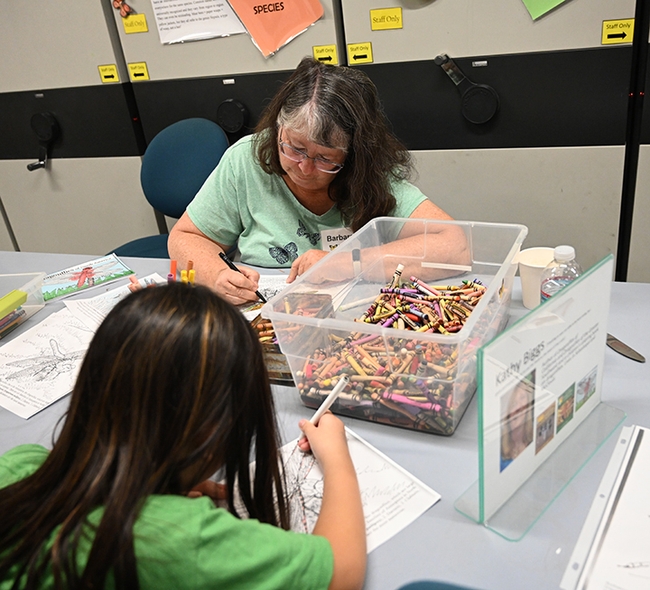
Bohart volunteer Barbara Heinsch of Davis coloring a dragonfly page. (Photo by Kathy Keatley Garvey)
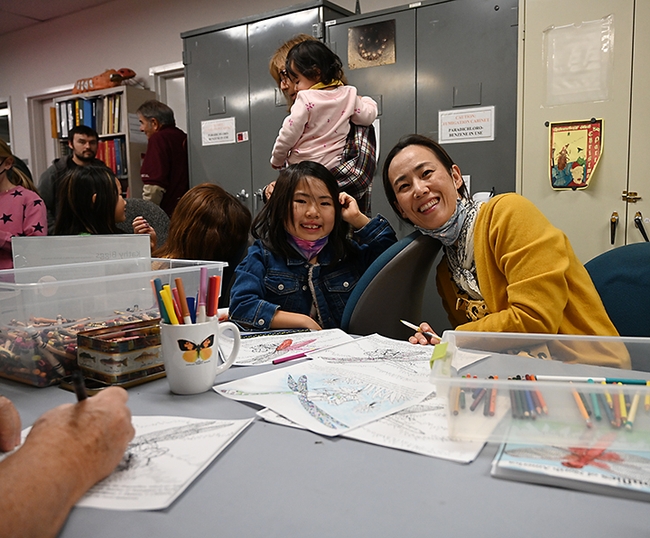
Sacramento residents Kay Lu of Sacramento and her daughter, Lena 7, loved creating the projects. (Photo by Kathy Keatley Garvey)
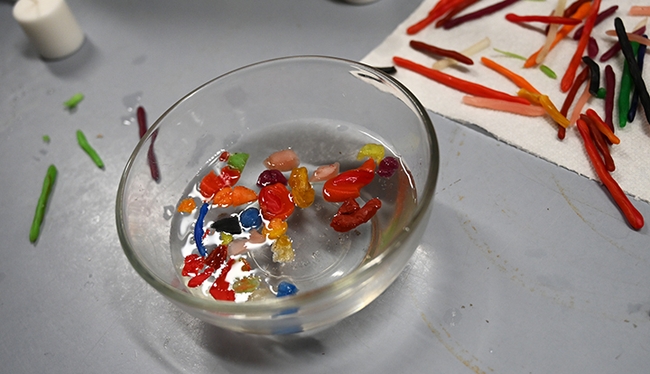
Ingredients for the dragonfly candles await the artists. (Photo by Kathy Keatley Garvey)